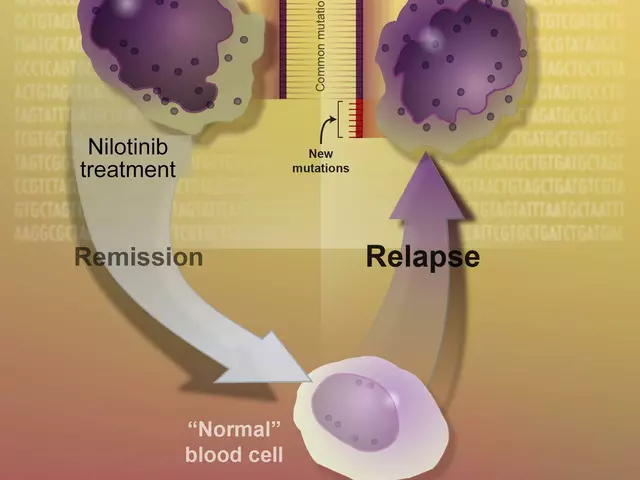
Benzoyl Peroxide: A Dermatologist's Perspective
Introduction to Benzoyl Peroxide
As a dermatologist, I have encountered countless patients with acne and other skin conditions. One of the most common and effective treatments I often recommend is benzoyl peroxide. The purpose of this article is to provide a dermatologist's perspective on benzoyl peroxide, its benefits, and how to use it safely and effectively.
In the following sections, we will delve into the science behind this powerful acne-fighting ingredient, discuss its various forms, and provide guidance on incorporating it into your skincare routine.
Understanding the Science of Benzoyl Peroxide
Benzoyl peroxide is a widely used acne treatment that has been on the market for decades. It is an organic compound that belongs to the peroxide family, which means it contains an oxygen-oxygen single bond. The unique properties of benzoyl peroxide allow it to penetrate the skin and target acne-causing bacteria (Propionibacterium acnes) by releasing oxygen, which in turn destroys the bacteria.
Additionally, benzoyl peroxide has keratolytic properties, meaning it helps to break down dead skin cells and unclog pores, further reducing the chances of acne breakouts. This dual-action approach makes benzoyl peroxide a powerful ally in combating acne and maintaining clear skin.
Forms and Concentrations of Benzoyl Peroxide
Benzoyl peroxide is available in various forms, such as creams, gels, lotions, and cleansers. This allows for versatility in incorporating it into your skincare routine, depending on your skin type and personal preferences.
The concentration of benzoyl peroxide in these products typically ranges from 2.5% to 10%. While higher concentrations may provide a more potent acne-fighting effect, they may also increase the risk of skin irritation. It is always best to start with a lower concentration and gradually increase it if necessary, under the guidance of a dermatologist.
Proper Application Techniques
Before applying benzoyl peroxide, it is crucial to cleanse your face with a gentle cleanser to remove dirt, oil, and makeup. This prepares the skin for the treatment and ensures its maximum efficacy.
Apply a thin layer of benzoyl peroxide to the affected areas, avoiding the eyes, mouth, and nostrils. Be sure to follow the product's instructions for the appropriate frequency of application, as overusing benzoyl peroxide can lead to skin irritation. Lastly, always remember to use a non-comedogenic moisturizer to help maintain your skin's natural moisture barrier.
Potential Side Effects and Precautions
As with any acne treatment, there is the potential for side effects when using benzoyl peroxide. Common side effects include dryness, redness, peeling, and mild burning or stinging. Most of these side effects are temporary and can be managed by adjusting the frequency of use or the concentration of benzoyl peroxide.
If you experience severe or persistent side effects, discontinue use and consult your dermatologist. When using benzoyl peroxide, it is essential to wear sunscreen, as it can make your skin more sensitive to the sun's harmful UV rays.
Combining Benzoyl Peroxide with Other Acne Treatments
In some cases, benzoyl peroxide may be used in conjunction with other acne treatments, such as salicylic acid, retinoids, or antibiotics. This combination therapy can provide a more comprehensive approach to treating acne and preventing future breakouts.
It is important to consult with a dermatologist to determine the most effective combination of treatments for your specific skin condition and to ensure that you are using these products safely and effectively.
Conclusion: Benzoyl Peroxide as a Key Component in Acne Treatment
In conclusion, benzoyl peroxide is a powerful and versatile acne treatment that has stood the test of time. As a dermatologist, I have seen firsthand the positive impact it can have on patients' skin, self-esteem, and overall quality of life.
By understanding the science behind benzoyl peroxide, selecting the appropriate form and concentration, and following proper application techniques, you can successfully incorporate this potent ingredient into your skincare routine and achieve clearer, healthier skin.





Written by Jakob Fitzroy
My name is Jakob Fitzroy, and I am an expert in pharmaceuticals with a passion for writing. I have dedicated my life to studying medication and understanding how it affects various diseases. My goal is to educate people about the importance of proper drug therapy and prevention methods. I have authored numerous articles, providing valuable insights on medication, its development, and its impact on patients. My driving force is to contribute to the ongoing fight against diseases and improve the overall health and well-being of people around the world.
All posts: Jakob Fitzroy